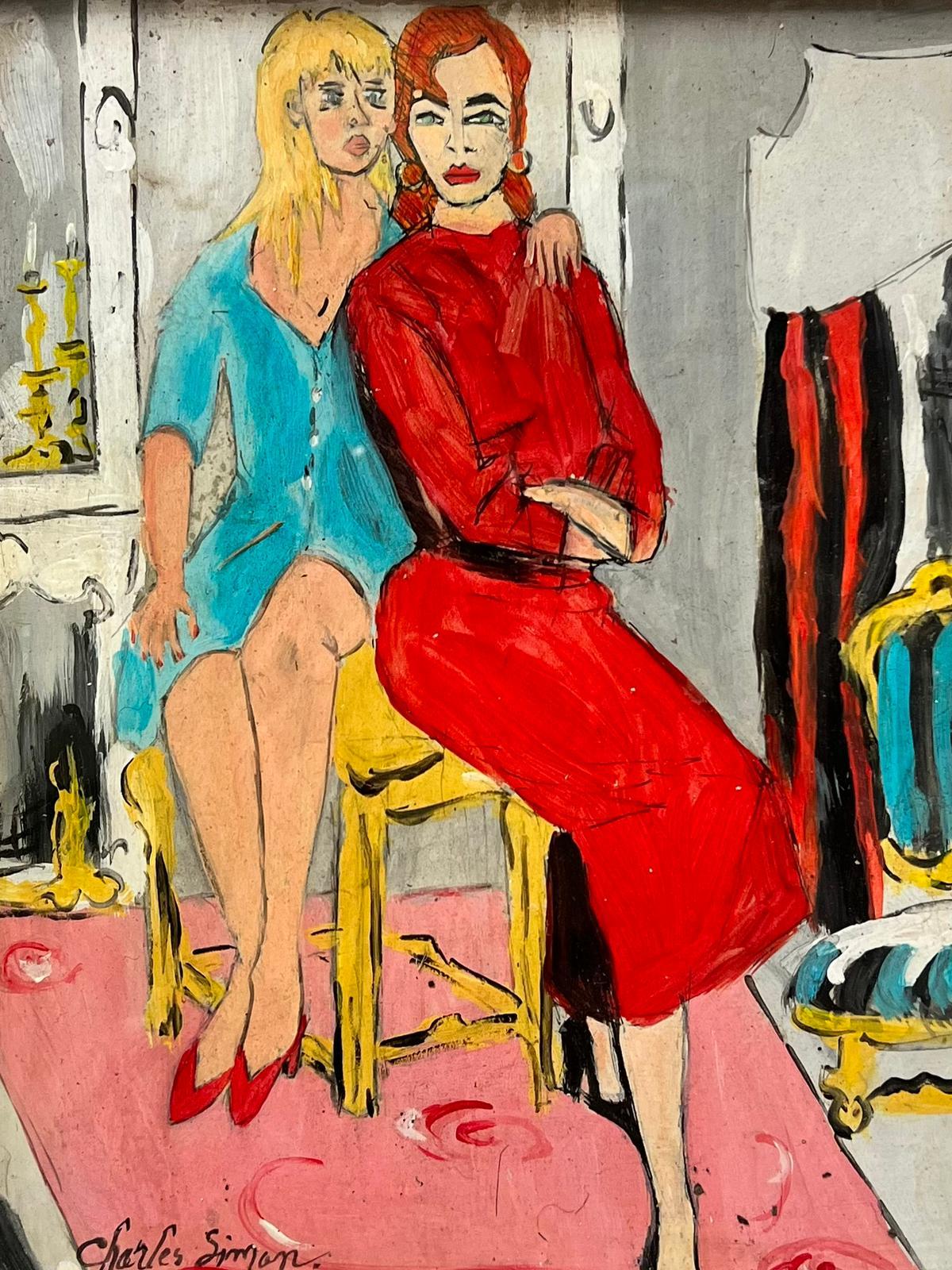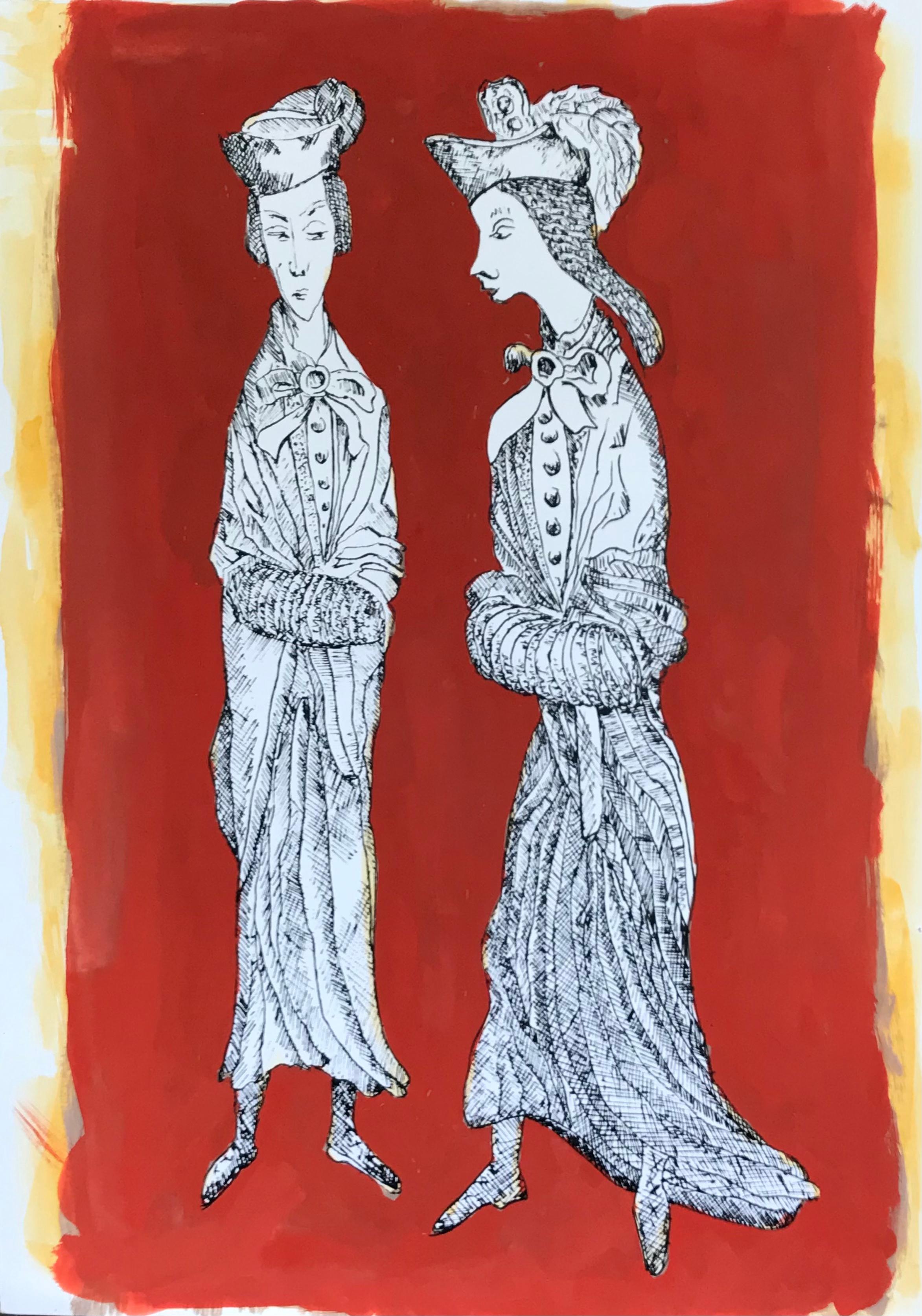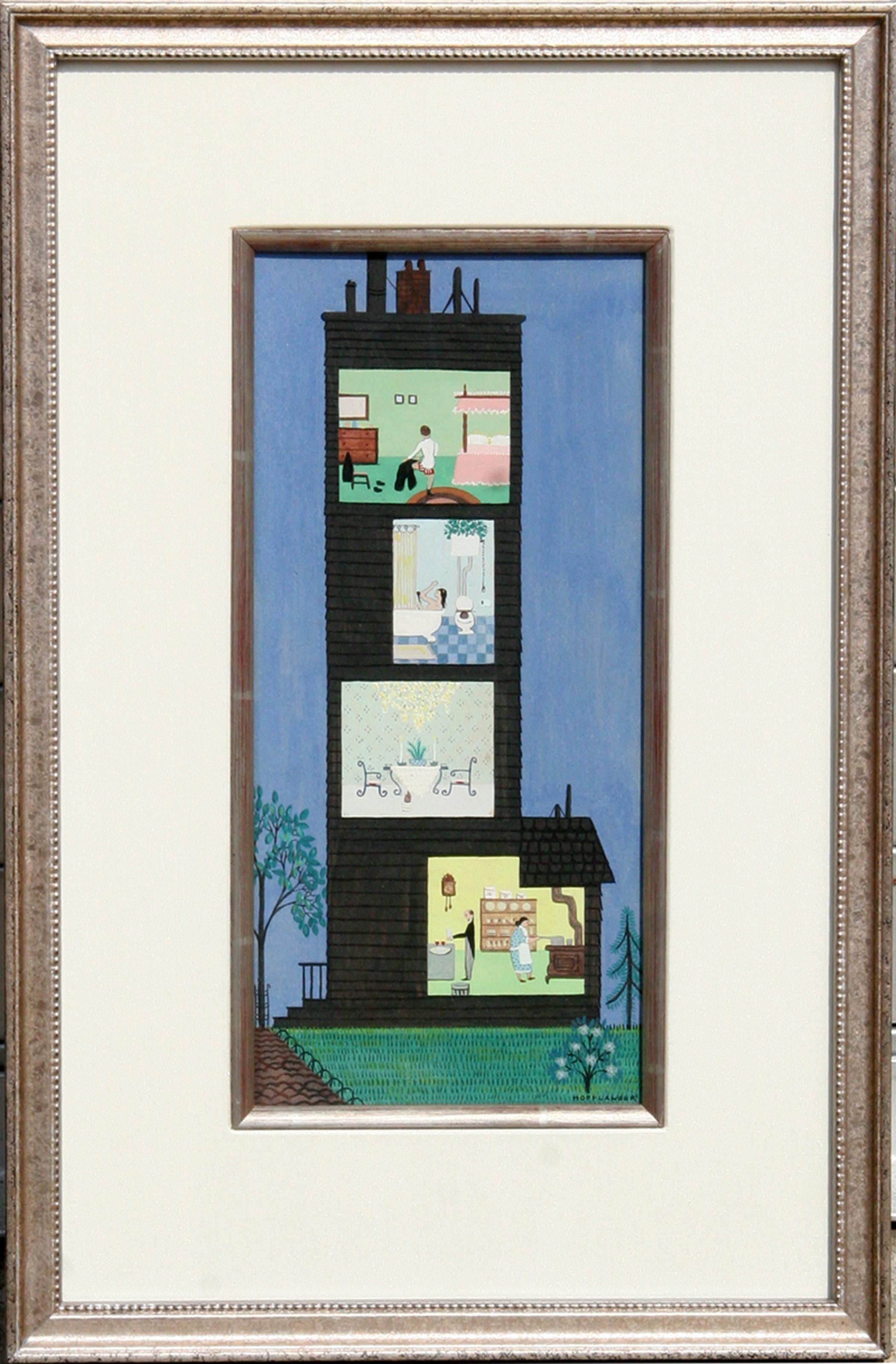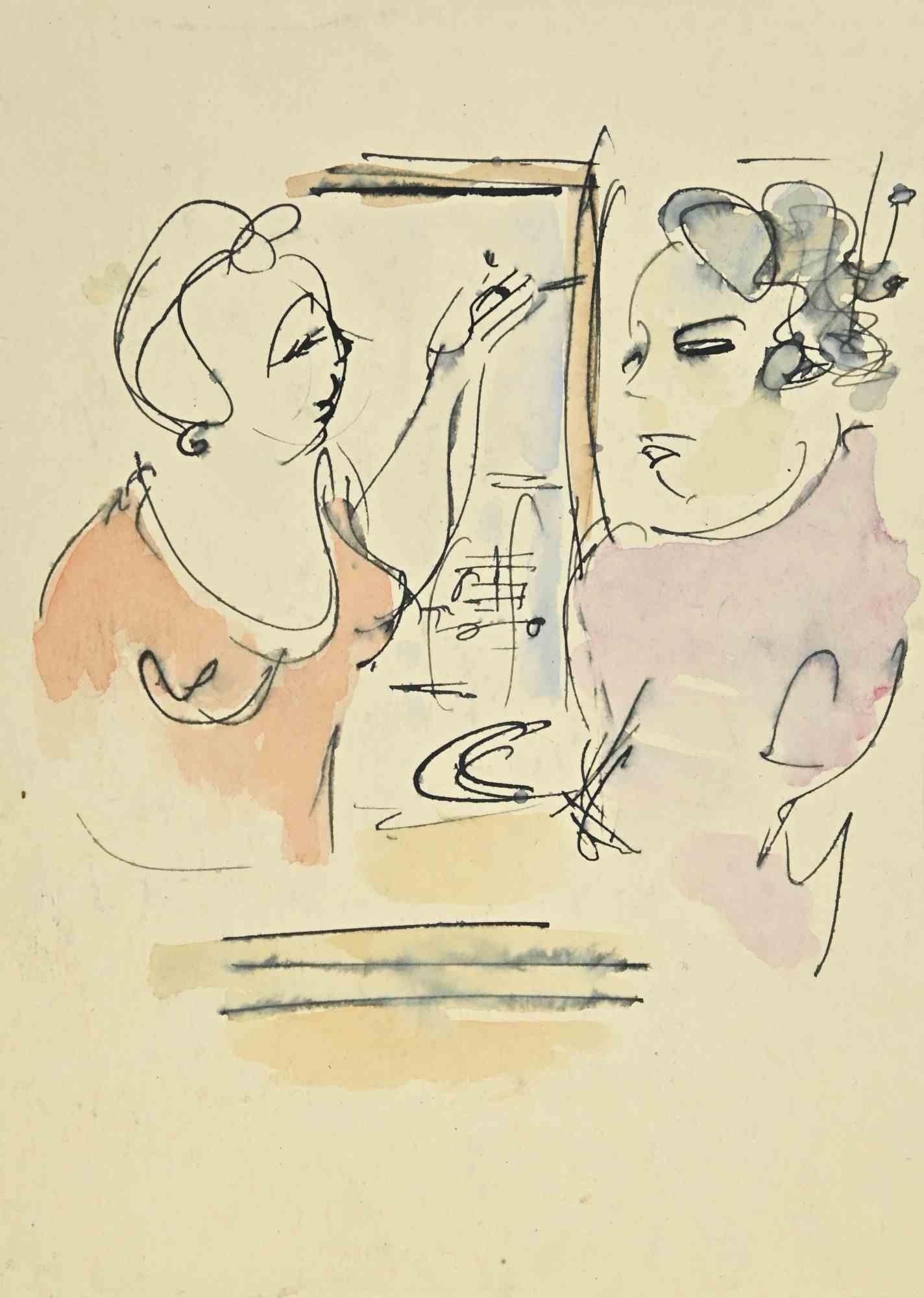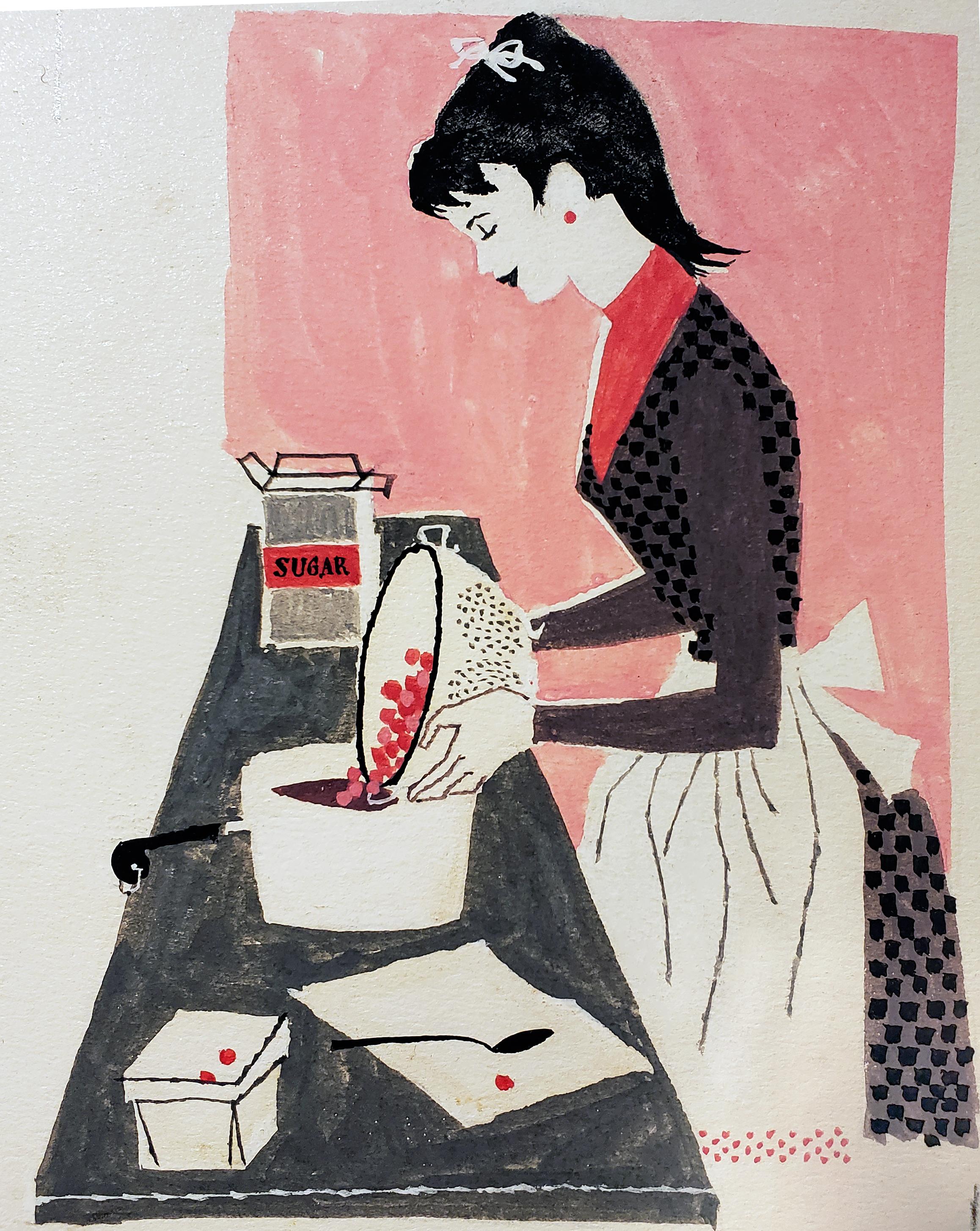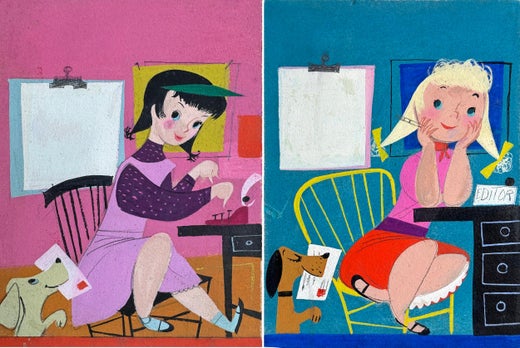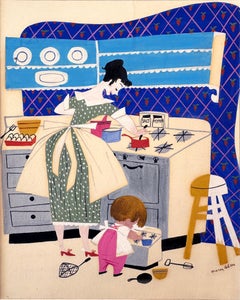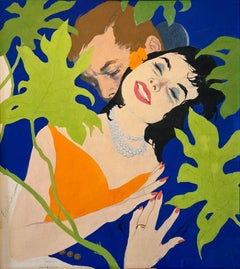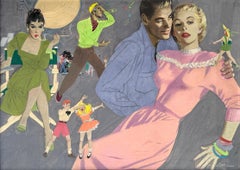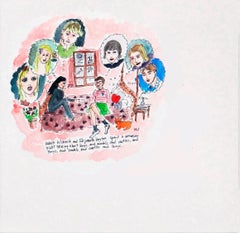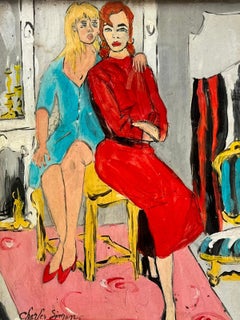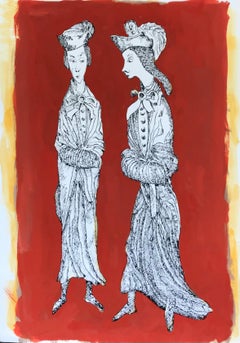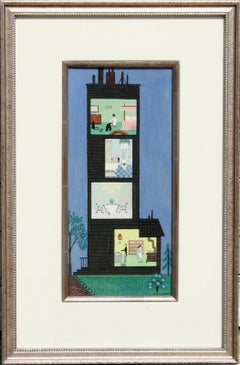Items Similar to Editor and Typist - Mid Century Women's Magazine Illustration Naive art
Video Loading
Want more images or videos?
Request additional images or videos from the seller
1 of 16
Lorraine FoxEditor and Typist - Mid Century Women's Magazine Illustration Naive art1955 Circa
1955 Circa
$10,000
£7,517.36
€8,715
CA$13,961.56
A$15,637.68
CHF 8,136.81
MX$189,918.54
NOK 103,154.02
SEK 97,333.50
DKK 65,026.33
Shipping
Retrieving quote...The 1stDibs Promise:
Authenticity Guarantee,
Money-Back Guarantee,
24-Hour Cancellation
About the Item
Lorraine Fox was a pioneering female Illustrator/artist who championed a unique style immediately identified as hers. This work, in two parts, was most likely for a newsstand woman's magazine. It has a simple, naive style that charms the viewers' eyes. Signed on both in pencil lower right. Unframed - Each work is 7.65 x 5.65 in dimension
__________________________________________
Lorraine Fox - from Illustration History
Biography - Entry written by Bailey Pfohl, 2016 Walt Reed Distinguished Scholar Intern
At the height of her career, Lorraine Fox (1925-1976) was described as “an elegant, quiet woman, highly imaginative, gifted in design and a standout artist in a field overbearingly populated by men.”[1] These words describe Fox’s legacy to this day.
Born and raised in Brooklyn, New York, Lorraine and her brother, Gill, were encouraged wholeheartedly to pursue art at early ages. Thanks to their mother, who took up a job as a housecleaner to help pay for their schooling, both went on to successful careers in illustration, he becoming a noted comic book artist, and she becoming an illustrator.
Lorraine attended the Pratt Institute of Art and graduated in 1944. While there, she met aspiring artist, Bernard D’Andrea, who she eventually married in 1951. That same year, Fox entered the Charles E. Cooper studio, where she was not only one of the very few women artists, but also possessed a unique artistic style that challenged the ideals of feminine beauty as portrayed in commercial art, which historically had been determined by men. In her early years at the studio she quickly claimed a place for herself in the crowded field and became an increasingly known illustrator whilst remaining busy with diverse work for books, covers, magazines, and advertisements. Some of the magazines that printed her illustrations included Woman’s Day, Redbook, Seventeen, Pfizer Spectrum, and Sports Illustrated.
Fox’s early style prioritized illustration that maintained a significant emphasis on design. In an interview, her artist friend Murray Tinkelman called her work “decorative illustration.” Fox’s designs recalled folk art, in contrast to the modern, retro style that was prevalent in contemporary commercial work.
In 1961, Fox returned to classes part-time at the Brooklyn Museum Art School for a duration of five years under Reuben Tam, which ended up being a transformative experience for Fox and her art. Tam encouraged his students to find their own originality, believing that this would naturally lead them to paint to their best and truest abilities. Already an artist with a distinct style, Fox worked hard to find her identity, even though that meant straying from the one she had initially worked in, which had already been widely accepted. Of her training she recounted: “He [Reuben Tam] never told us, ‘This is the way...’ He knew, of course, that the search has to come from you, the way you live, dream, the way your senses respond to eating, sleeping, drinking, the movies, whatever is affecting you. Everybody has the potential for originality once they learn about themselves.”[2] During her time at the Brooklyn Museum Art School, Fox’s art took what some critics considered to be a more mature turn. Her style continued to evolve until her last working days.
Before her studies with Tam, Fox’s early work focused largely on traditionally feminine themes that lent themselves well to magazines like Better Homes and Gardens, and later, Woman’s Day, Seventeen, Good Housekeeping, Cosmopolitan, The Ladies’ Home Journal, Redbook, and McCall’s. Later in her career, when her content shifted to more mature themes, she moved away from design-driven aspects, in favor of narrative, surreal, and even expressionist approaches. This difference can be best seen in the illustrations of "Pastry and Pies" and "Midsummer Night’s Dream," included at the end of this essay.
Fox exhibited her work frequently at The Society of Illustrators and the Philadelphia Art Directors Club exhibitions, the Brooklyn Museum, New York City Center Gallery, and the Silvermine Guild New England Show.
By then a prolific artist, Fox taught at the Parsons School of Design in New York City, and was a teacher and member of the Famous Artists School in Westport, Connecticut. In 1979, she was the first female ever to be inducted into the Society of Illustrators’ Hall of Fame, finally recognized for her artistic contributions and role in paving the way for other female practitioners.
The New School and Smithsonian Archives of American Art house her papers in their archives. There is also a significant collection of her magazine clippings in the Norman Rockwell Museum archive.
- Creator:Lorraine Fox (1922 - 1976, American)
- Creation Year:1955 Circa
- Dimensions:Height: 7.65 in (19.44 cm)Width: 5.64 in (14.33 cm)
- Medium:
- Movement & Style:
- Period:
- Condition:Good - Foxing around the outside of the live area. The Editor has a 1/4-inch nick on the left-hand side. unframed.
- Gallery Location:Miami, FL
- Reference Number:1stDibs: LU385314518292
Lorraine Fox
Lorraine Fox was an American illustrator and commercial artist who illustrated magazines, book covers and advertisements. She was born on May 22, 1922, in Brooklyn. She was a Hall of Fame member of the Society of Illustrators. Fox was a teacher at Parsons School of Design and at the Famous Artists School along with Norman Rockwell. Lorraine Fox died in 1976, in Mineola, New York.
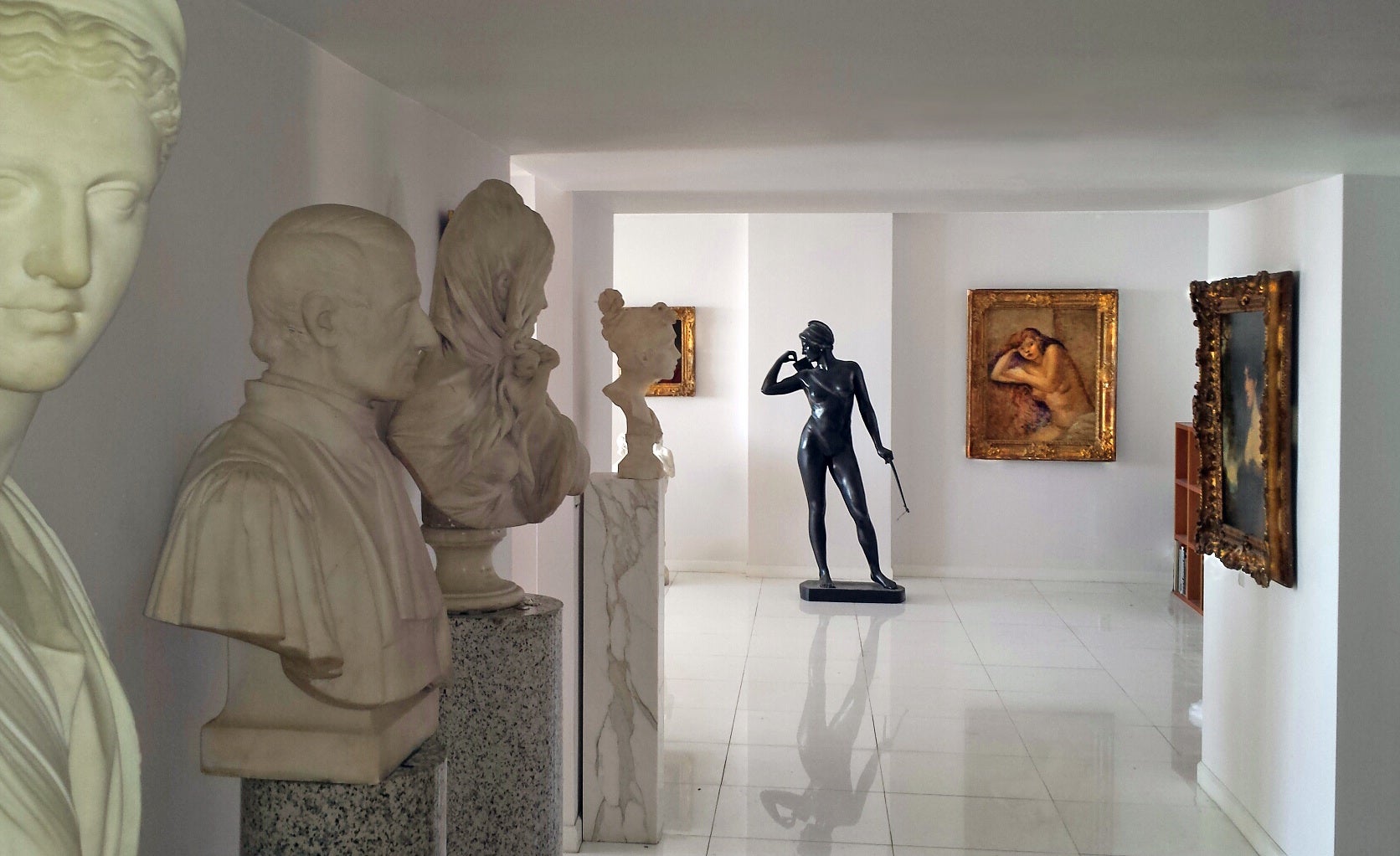
About the Seller
4.9
Gold Seller
Premium sellers maintaining a 4.3+ rating and 24-hour response times
Established in 2005
1stDibs seller since 2016
115 sales on 1stDibs
Typical response time: <1 hour
- ShippingRetrieving quote...Shipping from: Miami, FL
- Return Policy
Authenticity Guarantee
In the unlikely event there’s an issue with an item’s authenticity, contact us within 1 year for a full refund. DetailsMoney-Back Guarantee
If your item is not as described, is damaged in transit, or does not arrive, contact us within 7 days for a full refund. Details24-Hour Cancellation
You have a 24-hour grace period in which to reconsider your purchase, with no questions asked.Vetted Professional Sellers
Our world-class sellers must adhere to strict standards for service and quality, maintaining the integrity of our listings.Price-Match Guarantee
If you find that a seller listed the same item for a lower price elsewhere, we’ll match it.Trusted Global Delivery
Our best-in-class carrier network provides specialized shipping options worldwide, including custom delivery.More From This Seller
View AllWoman Baking, Redbook Illustration, Mid - Century
By Lorraine Fox
Located in Miami, FL
Signed lower right, unframed - Interior Illustration for Redbook Magazine
Category
1950s American Modern Figurative Paintings
Materials
Gouache
Baby's House Kitchen Interior - Woman Illustrator Mid-Century
Located in Miami, FL
Famed Disney artist Mary Blair was also an illustrator for assignments outside Disney.
The present work appears to be for a Gelolo Mchugh children's book called Baby's House. There i...
Category
1950s Feminist Figurative Paintings
Materials
Gouache, Illustration Board
Love Story Couple in Romantic Bliss Illustration - Mid Century
By Joe Bowler
Located in Miami, FL
A handsome man and a beautiful woman are depicted in a rapturous pose. Their bodies are intertwined with each other and with the surrounding floral elements. This masterfully render...
Category
1950s Romantic Portrait Paintings
Materials
Gouache, Pencil, Graphite
$14,400 Sale Price
20% Off
Mid-Century Cosmopolitan Illustration Surreal Family Narrative
By Jon Whitcomb
Located in Miami, FL
A complex story is portrayed in one picture.
American Glamour Illustrator Jon Whitcomb interprets a Mid-Century Cosmopolitan story about a beautiful blond actress who, on set, appea...
Category
1950s Surrealist Figurative Paintings
Materials
Gouache, Illustration Board
Mid- Century Fashion Illustration - Neiman Marcus ?
By Marjorie Ullberg
Located in Miami, FL
1950's elegant fashion models pose depicted for a designer clothing line for a major San Francisco department store - Perhaps Neiman Marcus. Estate ...
Category
1950s Modern Figurative Drawings and Watercolors
Materials
Watercolor, Pencil
My Husbands Former Girl Friends - First Black Illustrator/ Black Cartoonist
By E. Simms Campbell
Located in Miami, FL
Cuties Cartoon Strip - E. Simms Campbell
My Husband Former Girl Friends - First Black Illustrator/ Cartoonist,
Category
1940s Contemporary Portrait Drawings and Watercolors
Materials
Ink, Board
You May Also Like
Saturday Night with Artists Karen Kilimnik and Elizabeth Peyton painting
By Manuel Santelices
Located in Miami Beach, FL
Movies, TV and magazines are constant source of inspiration. Fame, as fleckring and shallow it can be sometimes, is very intriguing to him.
The worlds of fashion, society and pop cu...
Category
2010s Pop Art Portrait Drawings and Watercolors
Materials
Watercolor, Ink, Gouache, Archival Paper
1960's French Modernist Signed Painting Two Fashionable Ladies in Interior Room
Located in Cirencester, Gloucestershire
The Fashionable Ladies
French School, circa 1960's
signed 'Charles Simon'
signed oil/ gouache painting on board, framed
framed: 15 x 13 inches
board: 11 x 9 inches
provenance: private collection, France
condition: very good and sound condition
The frame is in a Montparnasse style frame. Montparnasse picture frames...
Category
Mid-20th Century Impressionist Portrait Paintings
Materials
Oil
1950's Modernist/ Cubist Painting - Two Fine Lady Caricatures
By Bernard Labbe
Located in Cirencester, Gloucestershire
French Portrait
by Bernard Labbe (French mid 20th century)
original gouache on artist paper, unframed
size: 11.75 x 8.25 inches
condition: very good and ready to be enjoyed.
proven...
Category
Mid-20th Century Modern Portrait Paintings
Materials
Gouache
Preparing for Dinner, Folk Art Acrylic on Board by Jack Hofflander
Located in Long Island City, NY
Jack Hofflander, American (1920 - 2003) - Preparing for Dinner, Year: circa 1975, Medium: Acrylic on Board, Size: 12 in. x 5.5 in. (30.48 cm x 13.97 cm), Frame Size: 18.5 x 12 in...
Category
1970s Folk Art Interior Paintings
Materials
Acrylic, Board
Women - Drawing - Mid-20th Century
Located in Roma, IT
Women is a drawing realized in the Mid-20th Century.
Ink and watercolor on Paper.
Good conditions with slight foxing.
The artwork is realized through deft expressive strokes.
Category
Mid-20th Century Modern Figurative Drawings and Watercolors
Materials
Ink, Watercolor
$402 Sale Price
25% Off
Scottish 20th Century naive oil painting of figures, dogs and birds in interior
Located in Petworth, West Sussex
Catriona Millar (Scottish, b. 1956)
Veva’s Guest
Oil on canvas
Signed with initials (lower left)
19.5/8 x 15.5/8 in. (50 x 39.7 cm.)
Catriona Millar (born 1956) is a Scottish figurative painter born in Milngavie, Glasgow. She studied at Grays School of Art, Aberdeen, where her tutors included Joyce Cairns RSA and Keith Grant...
Category
20th Century Folk Art Figurative Paintings
Materials
Canvas, Oil
More Ways To Browse
1950 Illustration
Vintage Advertisement Art
Mens Magazine
Vintage Comic Art
Fox Charm
Pie Painting
Paintings Of Pastries
Norman Rockwell Museum
Norman Rockwell Vintage Prints
Norman Rockwell Signed Prints
Artists Like Norman Rockwell
Good Housekeeping
Vintage Comic Covers
Sleeping Men
Vintage Ladies Home Journal
Midsummers Night Dream
Tam Tam Vintage
Charles Gill

